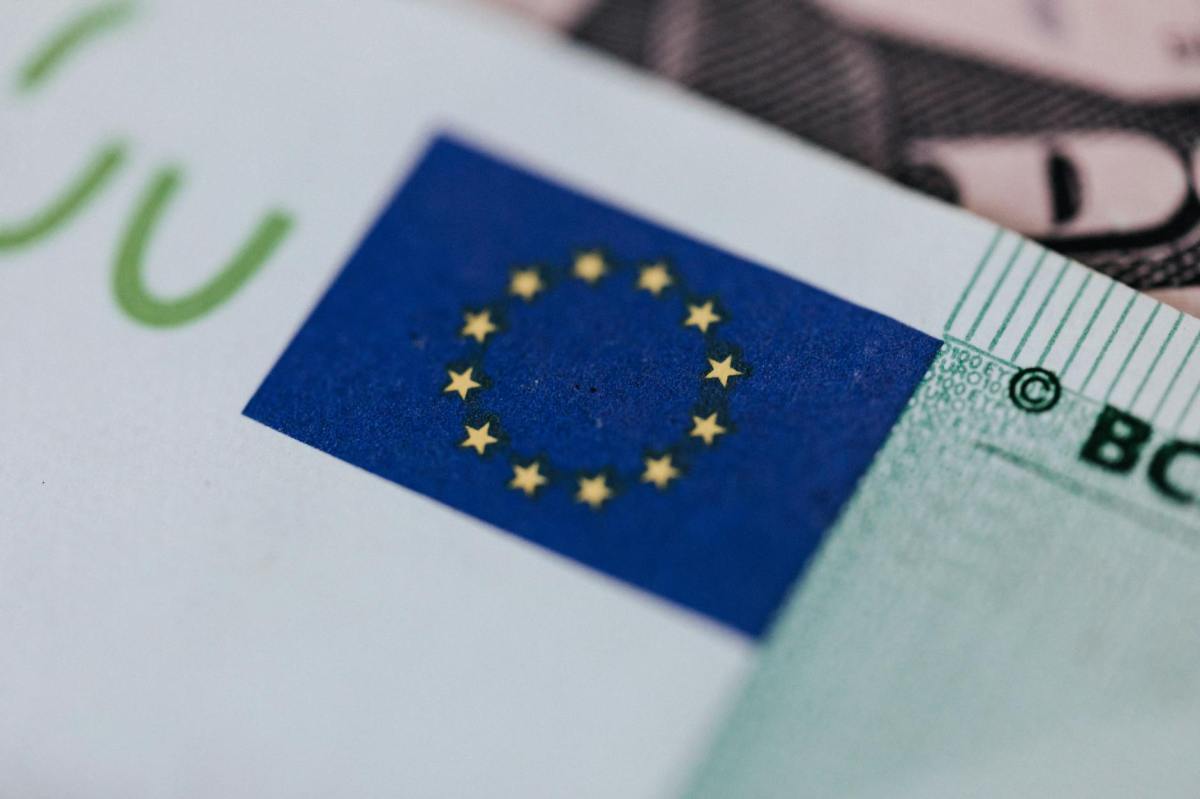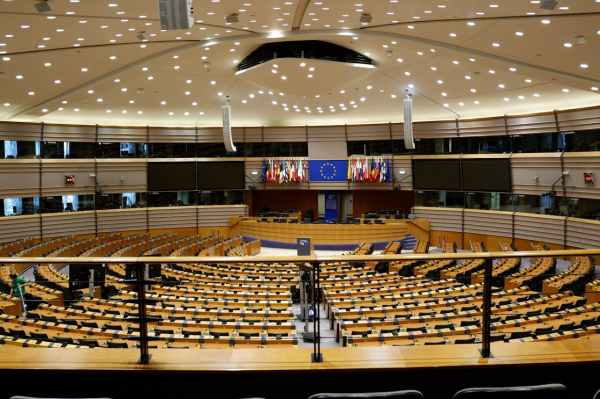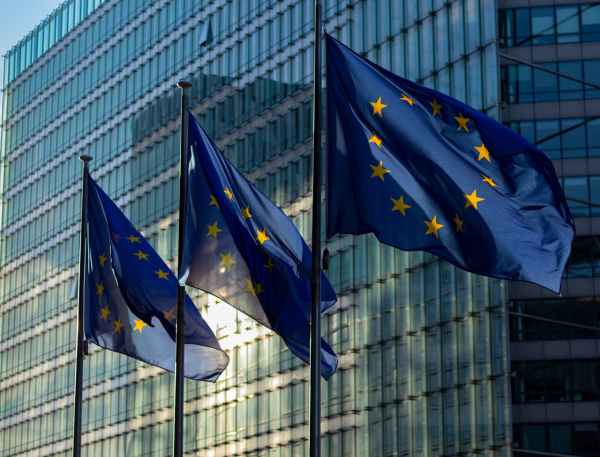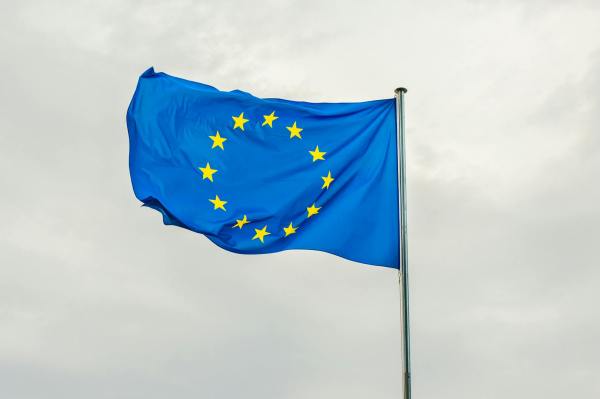The European Union has evolved over the decades of its existence into the supranational organisation of 27 states that we know today.
Although its functioning is constantly evolving, the bodies and institutions of which it is composed are always the same. The four main ones (the European Parliament, the European Council, the Council of the European Union and the European Commission) are complemented by the Court of Justice of the European Union, the European Central Bank and the European Court of Auditors.
Let us look at the tasks, powers, functioning and main characteristics of each of them.
The four main institutions work together with the aim of setting the agenda of strategic priorities and thus initiating and coordinating EU legislative activity.
European Commission
Also based in Brussels and created in 1958, the European Commission is made up of a group of commissioners, each of whom is elected by each of the member states. The current president since 2019 is the German Ursula von der Leyen, a position elected by the majority of the Parliament.
It is an executive, politically independent body responsible for drafting proposals for new legislation and implementing the decisions of the European Parliament and the Council of the EU.
Functions and composition of the European Commission
The Commission’s powers can be summarised as follows: it is responsible for proposing new laws, managing European policies and allocating funds, ensuring that Community legislation is properly implemented, and representing the European Union on the international stage.
In terms of composition, along with the president there are 26 commissioners, as mentioned above, a list of candidates that must be approved by the national leaders meeting in the European Council. The Commissioners have a letter of mandate for the period drawn up by the Commission presidency. After appearing before the Parliament, the Parliament decides whether or not to accept the team, which is finally appointed by the European Council by qualified majority. Once the formal procedure is completed, the new Commission is expected to start its mandate on 1 December 2024.
European Parliament
The European Parliament is the EU body with legislative, oversight and budgetary responsibilities. It has elected its members by direct suffrage since 1979, having been established in 1962. Its predecessor, dating from 1952, was the Common Assembly of the ECSC. Until 1979, elections were held by the national parliaments of the member states.
With three seats (in Luxembourg, Brussels and Strasbourg) it has five-year terms, the last elections being in June 2024.
Composition of the European Parliament
The institution is currently chaired by Roberta Metsola of Malta and is made up of 720 MEPs (up to a maximum of 750), distributed according to the population of each member country, with no state contributing less than 6 and no state more than 96 MEPs.
These elected officials are grouped according to political affinities rather than nationalities, with the following groups currently existing: European People’s Party (188 seats), Progressive Alliance of Socialists and Democrats (136), Patriots for Europe (84), European Conservatives and Reformists (78), Renew Europe (77), Greens/European Free Alliance (53), Left (46), Europe of the Sovereign Nations (25) and Non-attached (33).
Functions of the European Parliament
The EP’s three main functions cover legislative, supervisory and budgetary powers.
Its tasks are carried out in two main stages: committees (20 and three sub-committees) are responsible for preparing legislation and plenary sessions, in which legislation is adopted with a final vote involving all MEPs.
European Council
Composed of the heads of state or government of the member states, the President of the European Commission and the President of the European Council, the European Council defines the general political orientation and priorities of the EU.
The next president of the European Council will be Portugal’s António Costa, who will replace Belgium’s Charles Michel.
Based in Brussels, since 2009 it has been considered an official EU institution, having acquired official status in 1992, although its creation as an informal forum dates back half a century, to 1974.
Functions of the European Council
As mentioned above, this institution brings together the leaders of the Union to set the political agenda, representing the highest level of political cooperation between the different member states.
Through summits, usually quarterly, the European Council sets the EU’s overall political direction and priorities, but does not legislate. It deals with sensitive issues that cannot be resolved at a lower level, as well as establishing the common foreign and security policy according to the EU’s strategic interests.
Council of the European Union
The Council of the European Union is not to be confused with the European Council, discussed above, nor with the Council of Europe, a non-EU body.
The Council of the EU brings together the national ministers of each government to adopt laws and coordinate policies, making legislative decisions together with the European Parliament.
Depending on the subject matter to be dealt with, the composition of the people meeting varies, being configured by the branches of the different ministries and the different attributions of each one of them, with ten different formations.
Also based in Brussels, and created in 1958 (under the name of the Council of the European Economic Community), it has a rotating presidency lasting half a year, although the member states holding the presidency work together in groups of three. The three successive presidencies, known as presidential trios, define the long-term objectives and draw up a common 18-month programme, from which each country develops its six-month programme in greater detail. The current trio consists of Spain (July-December 2023), Belgium (January-June 2024) and Hungary (July-December 2024).
As we have just mentioned, in the second half of 2024 it is the turn of Hungary, who succeeded Belgium, and from whom Poland will take over for the first quarter of 2025.
Functions of the Council of the European Union
The main functions are to represent the executives of the member states, as well as to adopt European legislation and coordinate EU policies.
It also coordinates the policies of the member states, develops foreign and security policy (following the guidelines of the European Council), concludes agreements between the EU and other countries and, together with the Parliament, approves budgets.
Decisions are approved by a ‘qualified majority’ that must comprise 55% of the states (15 out of 27) that also account for 65% of the total EU population.
However, sensitive issues such as foreign policy and taxation must receive a unanimous vote of all 27.
Court of Justice of the European Union
The role of this body, created in 1952 and based in Luxembourg, is to ensure that EU law is interpreted and applied equally in all 27 member states, as well as to ensure that they and the institutions comply with EU law.
Composition of the CJEU
The court consists of two bodies:
– Court of Justice, consisting of one judge from each country and eleven Advocates General. Among other matters, it deals with cases brought by courts in each country.
– General Court, composed of two judges from each country. Actions for annulment brought by individuals, companies or, in some cases, national governments, are subject to the jurisdiction of the Court of Justice.
European Central Bank
Based in Frankfurt am Main and created in 1998, the ECB is currently chaired by Christine Lagarde of France.
In addition to the President, the Vice-President and the governors of the central banks of the member states make up this institution, whose main functions are to manage the euro, maintain price stability and conduct the monetary and economic policy of the Union.
European Court of Auditors
Founded in 1977 and based in Luxembourg, its current president is the Irishman Tony Murphy, with each member country electing a representative to it.
Its main function is to check that European Union funds are received and used correctly, thereby promoting better financial management.
The ECA operates as an independent external auditor and is therefore free to decide what it audits, how it audits and at what time and place it presents its findings.
See our positioning and set of recommendations for the next EU cycle 2024-2029.









